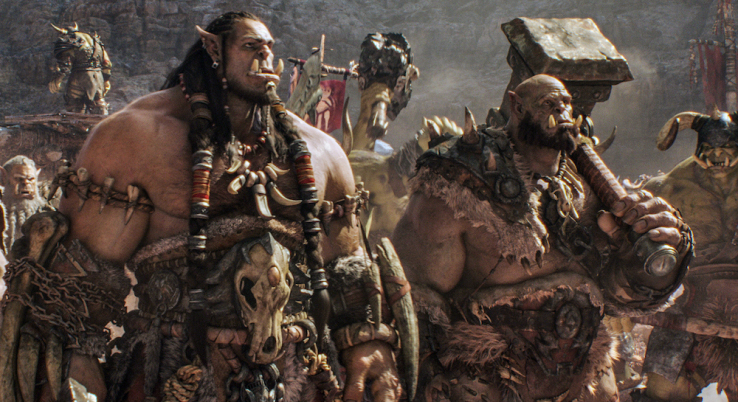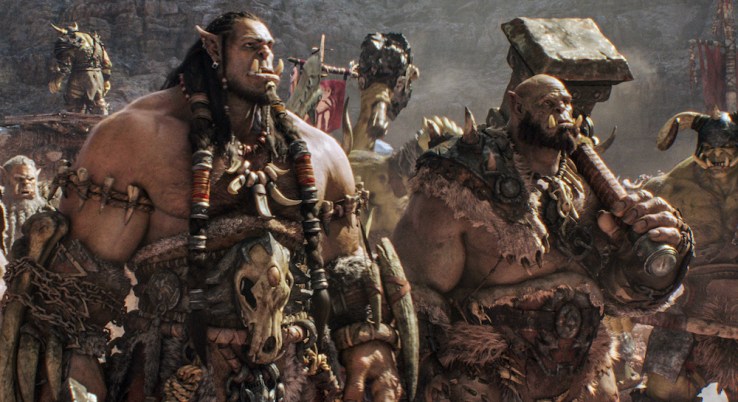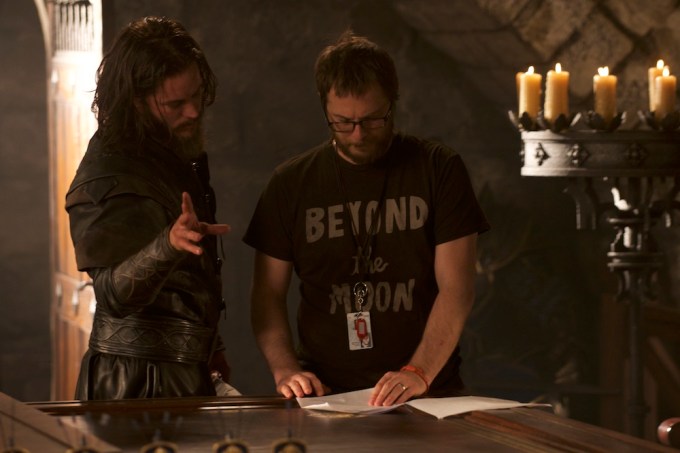

Oh God, another video game movie? Well, Duncan Jones knows the track record here.
“I would struggle to think of any other video game movie that can be described as a great movie,” he told me. “That’s what I wanted to do … I wanted to make a great film that just happened to be based on a video game.”
Jones (son of David Bowie) is the director of the science fiction films Moon and Source Code. He’s now co-writer and director of Warcraft, the feature film adaptation of the popular fantasy game franchise, which opens in the United States on Friday. Both the games and the film depict a conflict between humans and orcs, and Jones said a key part of his pitch was “to be true to the spirit of the games — you had to have heroes on both sides.” He added that it’s “essentially a war movie where the audience cares about both sides of the conflict and can see both perspectives.”
Portraying heroic humans seems pretty straightforward, but the orcs were more difficult. In fact, Jones said he knew “the orcs was technically always going to be the greatest challenge.”
“We’re not treating our creatures like monsters,” he said. “They don’t have to just grimace and snarl. There are emotional scenes where you have to empathize with them.”
Those orcs were created with computer generated effects, but as is becoming increasingly common, they were also portrayed by real actors on set, with their performances recorded via motion capture.
While the orcs already had a defined look in the games, Jones said his team had to “try to find a way to interpret the more comic book style of the game and make it work in live action.” He compared the final result to a homunculus, with heads that are the same size a human’s, while their necks are big and their arms are enormous. (He admitted that waiting to see the results was “a little bit nerve-wracking”: “We’d already done two weeks of shooting on the film before we saw our first finished orc shots.”)

Jones said all the actors and actresses portraying the orcs trained together in an “orc camp.” He also praised the work of Terry Notary, who helped develop the creatures’ movement styles, as well as Toby Kebbell, who plays the orc hero Durotan. (Kebbell previously portrayed the villainous ape Koba via motion capture in Dawn of the Planet of the Apes.)
Asked whether the motion capture acting style differs from a regular performance, Jones said, “I think you don’t need a different skillset. What you need is a willingness to throw your ego out the door and accept that you’re going to look ridiculous on set. You treat it like a real acting role, you treat it like a stage play, you give it a full performance. Every nuance of what you do is picked up and translated into your character. There’s no hiding anything. You certainly can’t phone it in.”
At this point, I should probably mention that most of the early reviews of Warcraft have been pretty negative — Indiewire, for example, described it as a Battlefield Earth for the 21st century.
The critics, I suspect, are being overly harsh. I don’t think Jones entirely succeeded in creating a great film, but he made a fun one. Warcraft is exciting, goofily likable and for the most part, dramatically satisfying, making you root on the orc and human characters. Our interview took place before the reviews had come out, so I didn’t get to ask about them specifically, but we did discuss several elements that might be harder for critics to swallow.
For one thing, despite efforts to translate the orcs into live action, and despite the real performances underneath, there’s still something comic book-y about them — and I mean that in a good way. In fact, I’d say that the same bright, colorful aesthetic extends to the entire movie: When you see live action humans fighting giant, furious-looking orcs, it feels like a comic book come to life, and if you’ve still got an inner teenager somewhere, they’ll probably be jumping up-and-down with excitement.
When I asked about the film’s look, Jones said he was trying to create a fantasy movie that didn’t look like other fantasy movies.
“After The Fellowship of the Ring, the films that followed it, instead of having their own unique aesthetic, they all wanted to be Lord of the Rings as opposed to learning from Lord of the Rings,” he said. “I wanted to break with the genre a bit, give the palette a little bit more vibrancy and saturation.”

And while The Fellowship of the Rings and Game of Thrones introduce their fantasy elements gradually, almost cautiously, so that non-nerds aren’t immediately overwhelmed, Warcraft throws you into the deep end right away. On both sides of the narrative, you’re quickly confronted with actors intoning serious lines about things like the Horde, the Fel and the Guardian, and you’ve got characters (some of them from the games) with hard-to-pronounce names like Anduin Lothar and Medivh.
Jones admitted that he’s “terrible with the names of characters” and joked that in his debut film Moon, “At least everyone is named Sam.” (Confused? Just watch Moon.) More seriously, he said his approach is to “treat the audience with respect and maturity and have a certain faith in them to catch up.”
Jones seems to have lined up his next film already — the long-gestating Mute. At the same time, he said he’s certainly interested in returning to the Warcraft universe. The team planned a full trilogy, but whether it becomes a reality depends on whether audiences embrace the first film.
“There are huge numbers of people who have played Warcraft in the past and play Warcraft today,” he said. “I feel confident that if they go see the movie, they’ll feel like they’re visiting a place that they know well. To people who know nothing about Warcraft, it’s an opportunity to see something that you haven’t seen since the first Fellowship of the Ring.”
Featured Image: Universal/Warcraft

